The upcoming US non-farm payroll report is set to capture the market’s full attention today, with investors seeking signs that could affirm Fed’s interest rate has already peaked. In light of Fed Chair Jerome Powell’s comments this week emphasizing the need for “some slower growth and some softening in the labor market” to stabilize prices, the details of the job data, particularly wage growth, will be under intense scrutiny.
The market consensus pegs the headline growth of employment at 172k for October, a significant decrease from September’s robust 336,000 figure. Unemployment rate is projected to hold steady at 3.8%, with average hourly earnings expected to notch up by 0.3% mom.
Preceding indicators present a mixed picture: ISM Manufacturing employment showed a notable decline 51.2 to 46.8, ADP reported a modest private employment increase of 113k that fell short of expectations, and initial unemployment claims hovered around the 210k mark on a four-week moving average, indicating stability.
Wage growth emerges as the unpredictable factor in the equation, with the potential to sway Fed’s monetary policy direction. This data point has been particularly scrutinized for inflationary signals and the possibility of triggering another rate hike.
Equity markets have reflected a sense of optimism this week, with strong rebound in DOW and other major indexes. DOW’s correction from August high at 35679.13 could have already concluded at 32327.20. To further strengthen the case, DOW will need to break through 34147.63 resistance decisively. However, rejection by 34147.63 will retain near term bearishness for another decline through 32327.20.
The impending non-farm payroll report could be a critical determinant of the market’s direction in the closing months of the year.
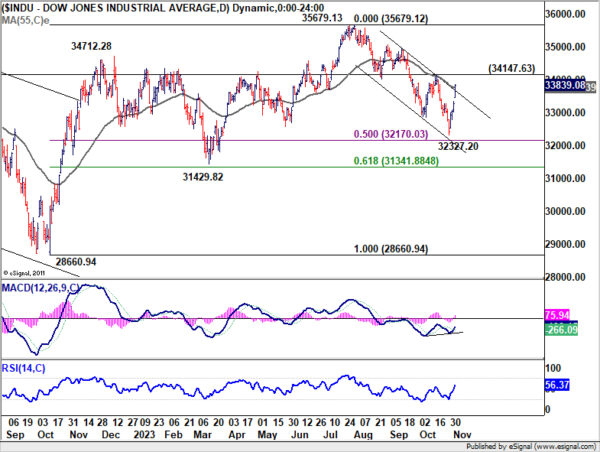




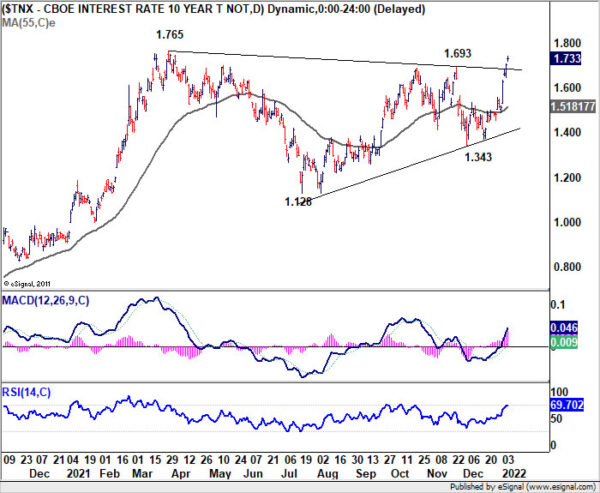
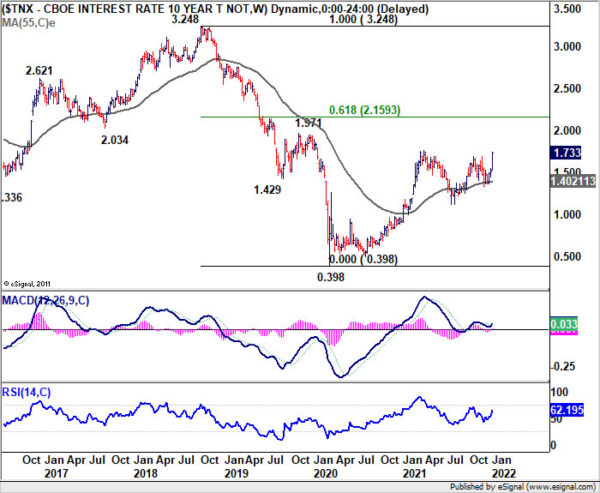
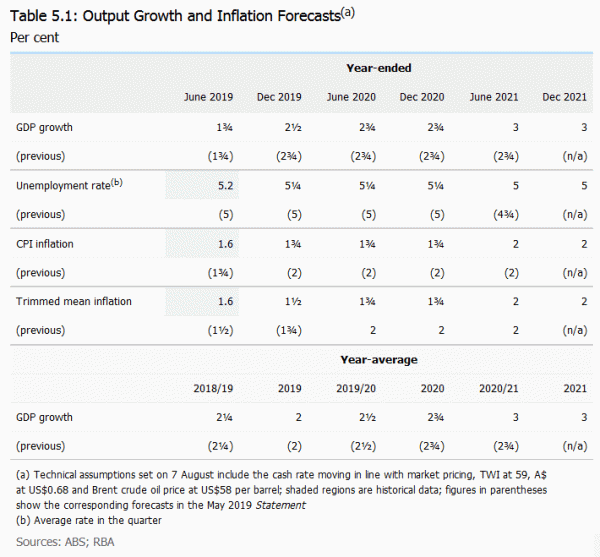
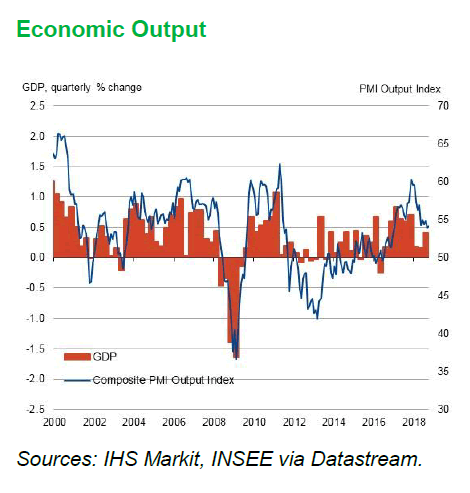
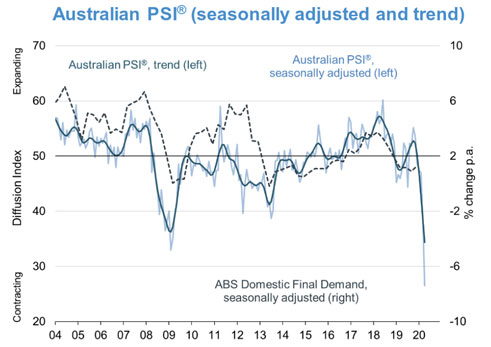
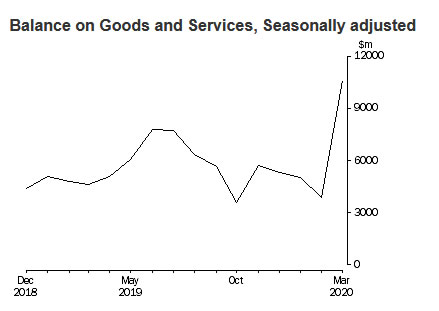
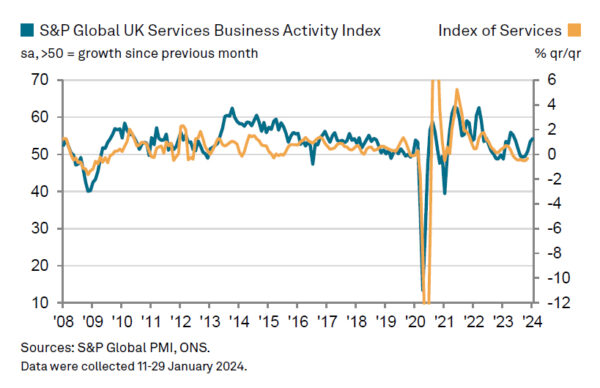
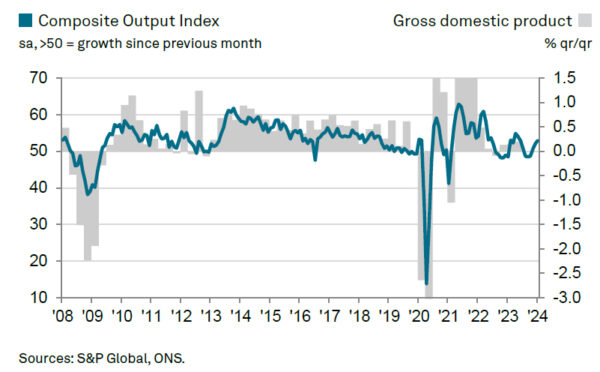
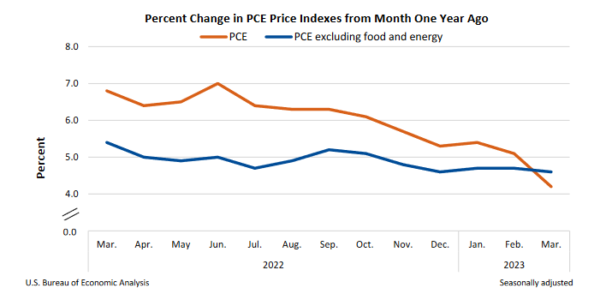
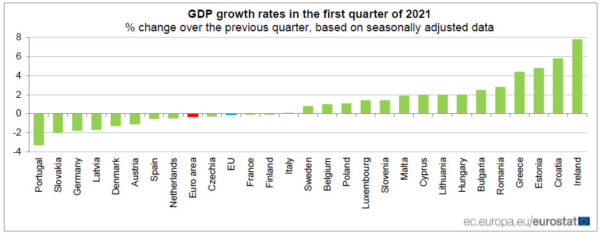
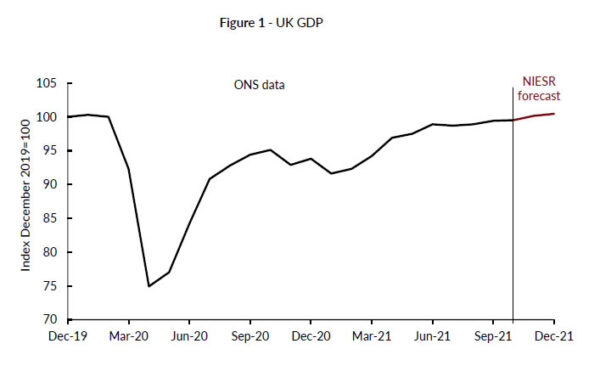

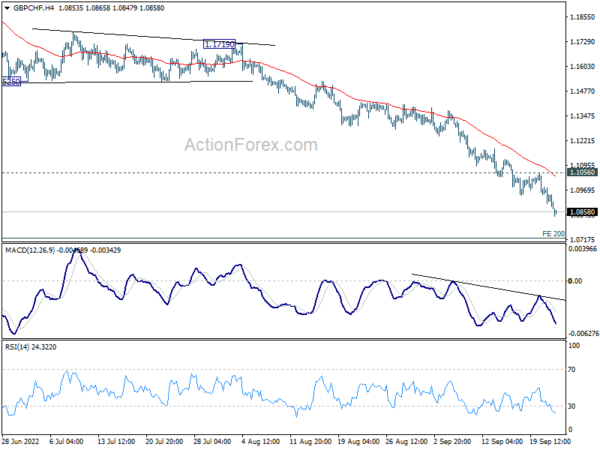
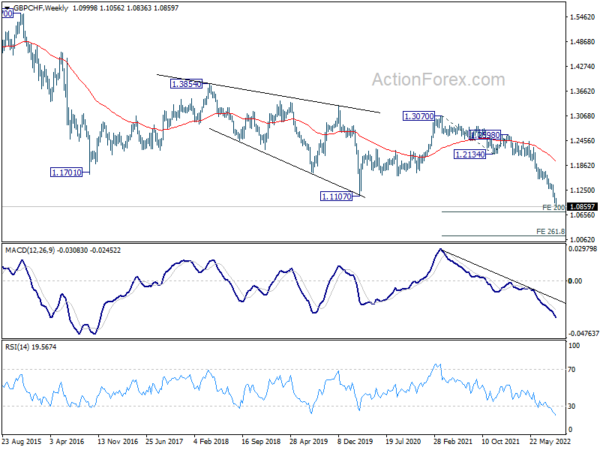
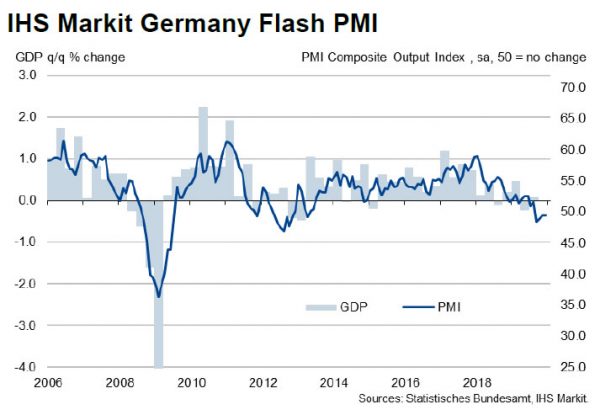

DOW down 10% as selloff extends, key fibonacci support being tested
US stocks plunged deeply at open and hit the first circuit breaker immediately, halting trading of 15 minutes. There is no clear sign of any recovery after second open yet, with DOW currently down around -10%. We’d maintain DOW is close to a long term fibonacci support level of 38.2% retracement of 6469.96 to 29568.57 at 20744.89. And a rebound should be due.
However, sustained break of 20744.89 could trigger another round of position squaring. Decline could accelerate further to 61.8% retracement at 15293.62.